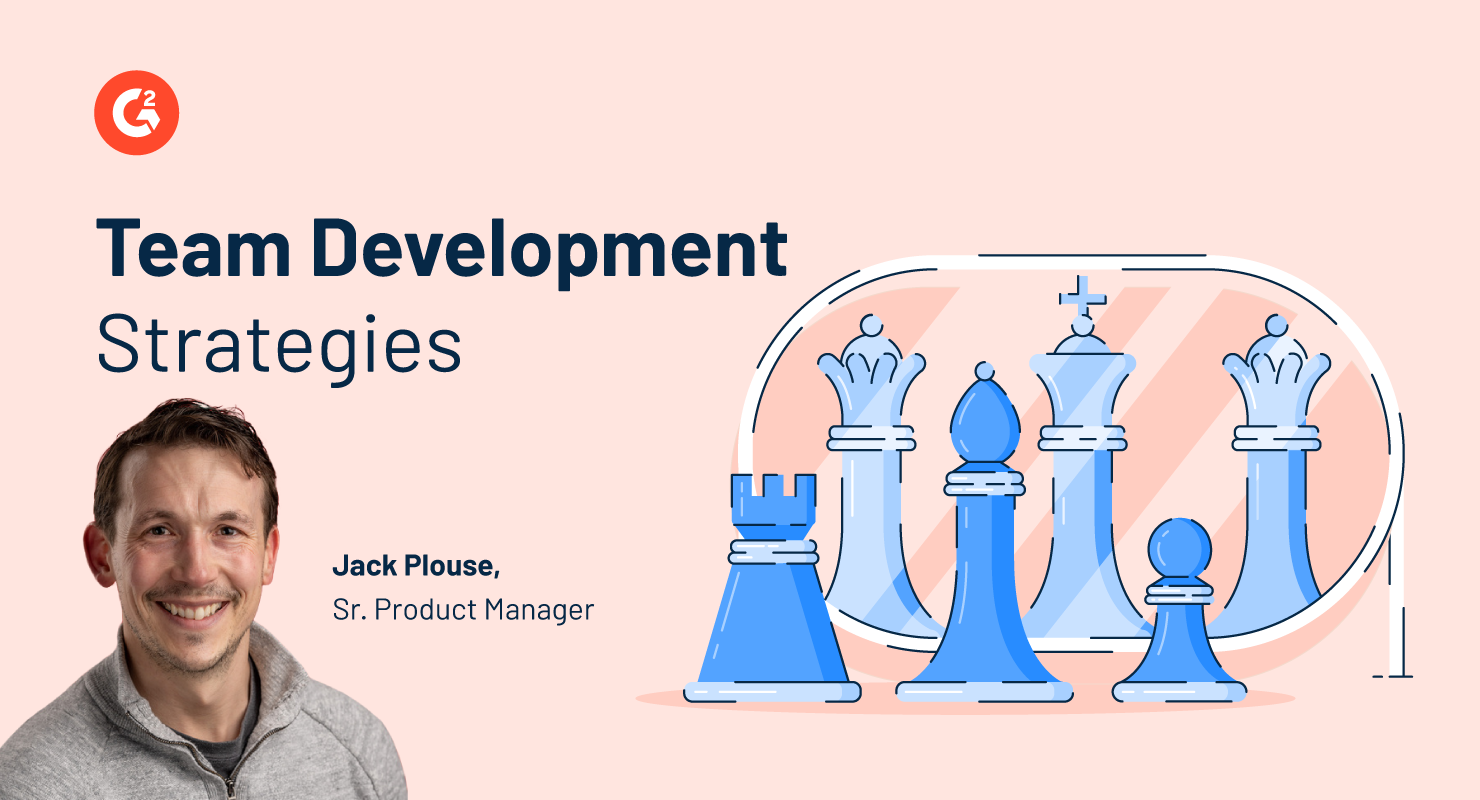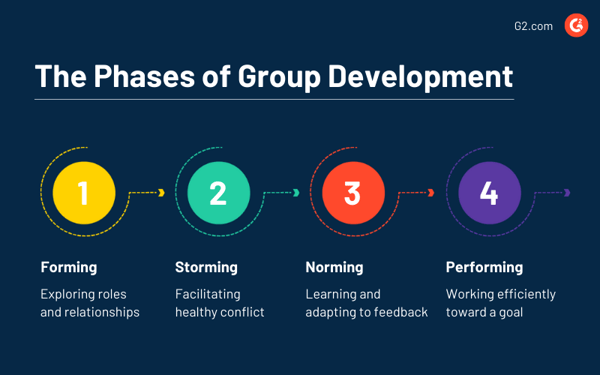October 19, 2023
 by Jack Plouse / October 19, 2023
by Jack Plouse / October 19, 2023

I recently reflected on my personal highs and lows of the last year, and it made me think about the beginning of my journey with G2.
I was super excited to build a services marketplace. But here's the kicker. Not only were we building a new product – we were building a new team!
Just imagine the scene. An expanding group of talented individuals, each brilliant in their own right, but with no shared history or experience working together. We presented like this band of misfit superheroes, coming in with our own unique powers, trying to figure out how to save the day.
I watched our team members navigate the nuances of working together and with cross-functional departments, while trying to understand how to best use everyone’s particular skills and expertise. It was fascinating, but daunting because of the ambitious goals we had set for ourselves.
Then came the “aha” moment. Amidst the hustle and bustle, it dawned on me: teams, just like individuals, go through a growth phase. They start from scratch and evolve into a performing unit, and that transition doesn’t happen overnight. It was like taking care of a plant; I needed to nurture its coming-of-age, give it time, practice my own patience, and yet remain strategic. I knew I couldn’t force it to grow, but creating the right conditions would encourage progress.
So, I took a step back and considered my approach. Instead of pushing, I focused on tasks and strategies that could speed up the team’s maturity. By doing so, not only did we foster trust and camaraderie within the team, but we also innovated to create some amazing features along the way. Bonus – we stayed true to our roadmap.
Considering the natural evolution of teams led me to give my group at G2 the right blend of challenge, support, and time to truly come together and shine. Building a successful product team is far from just innovative ideas or cutting-edge technology. At the core lies the human element – the teams that dream up, create, and refine our products.
Leaders driving product development and striving toward understanding the crucial role of team actualization have to level-set expectations and know how to move toward a productive, empowered, engaged development team.
An effective product development process mirrors the team's maturity. As Marty Cagan emphasizes in his books Inspired and Empowered, the team's ability to produce high-quality work and make continuous progress signals a team in the performing stage.
For these high-performing teams, conflict resolution becomes refined, pointing to a maturity that promotes productivity rather than chaos. While the beginning stages of team collaboration depend on leadership for decision-making, more mature teams display the initiative and autonomy to pave their own way.
As teams mature, they deftly navigate changes and new challenges, iterate their approach, and transform their experiences into invaluable lessons. Leaders can use this criteria to assess their team's development and guide them toward achieving peak performance.
This idea illustrates the intertwining phases of product development and team maturity. Knowing how they influence each other will show leaders how to navigate these complexities successfully.
Bruce Tuckman was an American psychologist known for his work in the field of group dynamics. In 1965, he developed his widely recognized model of group development, known as the Tuckman Model.

Tuckman's model suggests that teams go through distinct stages: forming, storming, norming, and performing. Similarly, the Lean Startup framework, developed by Eric Ries, emphasizes an iterative approach to product development. Together, these models provide insight into the effects of team maturity on product development and the importance of iteration at each stage.
In the forming stage, team members start to explore their roles and relationships. They focus on defining the project's goals and scope. They’re highly dependent on the leader for guidance and direction.
The forming stage and the build stage inaugurate a trajectory of growth, marked by a phase of uncertainty and exploration when members are figuring out roles and responsibilities. The emphasis in both scenarios is on foundation building; teams aim for future cooperation and effectiveness as they construct a base for future growth.
For success in this stage, leaders may need to set precise, measurable goals for the team and completely clarify the project's scope. It's also helpful to encourage a learning culture with constructive feedback for continued growth.
The storming stage is marked by conflicts and disagreements as team members push against the boundaries established in the forming stage. It’s a critical period of team growth. In Lean terms, this stage aligns with the 'Measure' phase, when the team collects and analyzes feedback from the MVP.
Mature teams can navigate this stage effectively because they know how to harness the tension to drive innovation. They can gather, interpret, and act upon the feedback, iterating the product as needed.
During this phase, leaders must actively build a culture of healthy conflict where disagreements and conflicts become important aspects of the process. They have to promote open dialogue and respect for differing options and establish a decision-making model or strategy to resolve conflict.
The norming stage sees the team beginning to resolve conflicts, appreciate colleagues’ skills, and respect the leader’s authority. A mature team is more likely to draw valuable lessons from the feedback and tweak the product strategy as necessary. The teammates are better equipped to validate or invalidate their hypotheses and decide whether to pivot or persevere.
Leaders can support the team in this stage by nurturing team cohesion and empowering decision-making. They should encourage team members to use a learning mindset, consider vision and goals, and work on objectivity. Finding ways to communicate transparently and taking every opportunity to celebrate successes will show teams that they have a thoughtful, appreciative, and supportive supervisor.
Now the team starts functioning as a unit and works efficiently toward their goal. Mature teams work especially well at this stage because they iterate quickly, make data-driven decisions, and continuously incorporate feedback into the product.
The leader can delegate and facilitate work, knowing the team is empowered and capable of resolving the task. Team members happily request and decisively respond to feedback. At this stage, greater accountability and communication structures have now become the norm.
Team maturity plays a crucial role in product development. Mature teams expertly handle the challenges at each stage of development because they’ve learned how to make critical decisions, manage conflicts, and incorporate feedback into the product. Understanding the stages of team development and leading teams to maturity through these steps gives rise to successful product development.
Just as team maturity is crucial in product development, the capabilities and proficiency of service providers are key factors when selecting a service partner. To evaluate both satisfaction and proficiency levels, buyers can turn to grids on G2 like HubSpot Consulting Providers.
Jack Plouse is a Senior Product Manager at G2 with over two decades of professional experience spanning leadership, operations, marketing, and product development. Specializing in Financial Services and B2B Services, he has spent the last ten years establishing and scaling product teams. Jack holds a master's degree in Organizational Leadership from Gonzaga University and boasts many certifications in areas like marketing, product management, coaching, and analytics. When he's not spearheading product initiatives, he's an avid traveler and enjoys playing and coaching soccer.
The allure of editing is the opportunity it provides to be at the center of the relationship...
 by Sinchana Mistry
by Sinchana Mistry
I’ve seen post after post from sysadmins, solo IT pros, and managed service providers (MSPs)...
 by Soundarya Jayaraman
by Soundarya Jayaraman
Data is changing the way the world works.
 by Jacob Caffrey
by Jacob Caffrey
The allure of editing is the opportunity it provides to be at the center of the relationship...
 by Sinchana Mistry
by Sinchana Mistry
I’ve seen post after post from sysadmins, solo IT pros, and managed service providers (MSPs)...
 by Soundarya Jayaraman
by Soundarya Jayaraman


